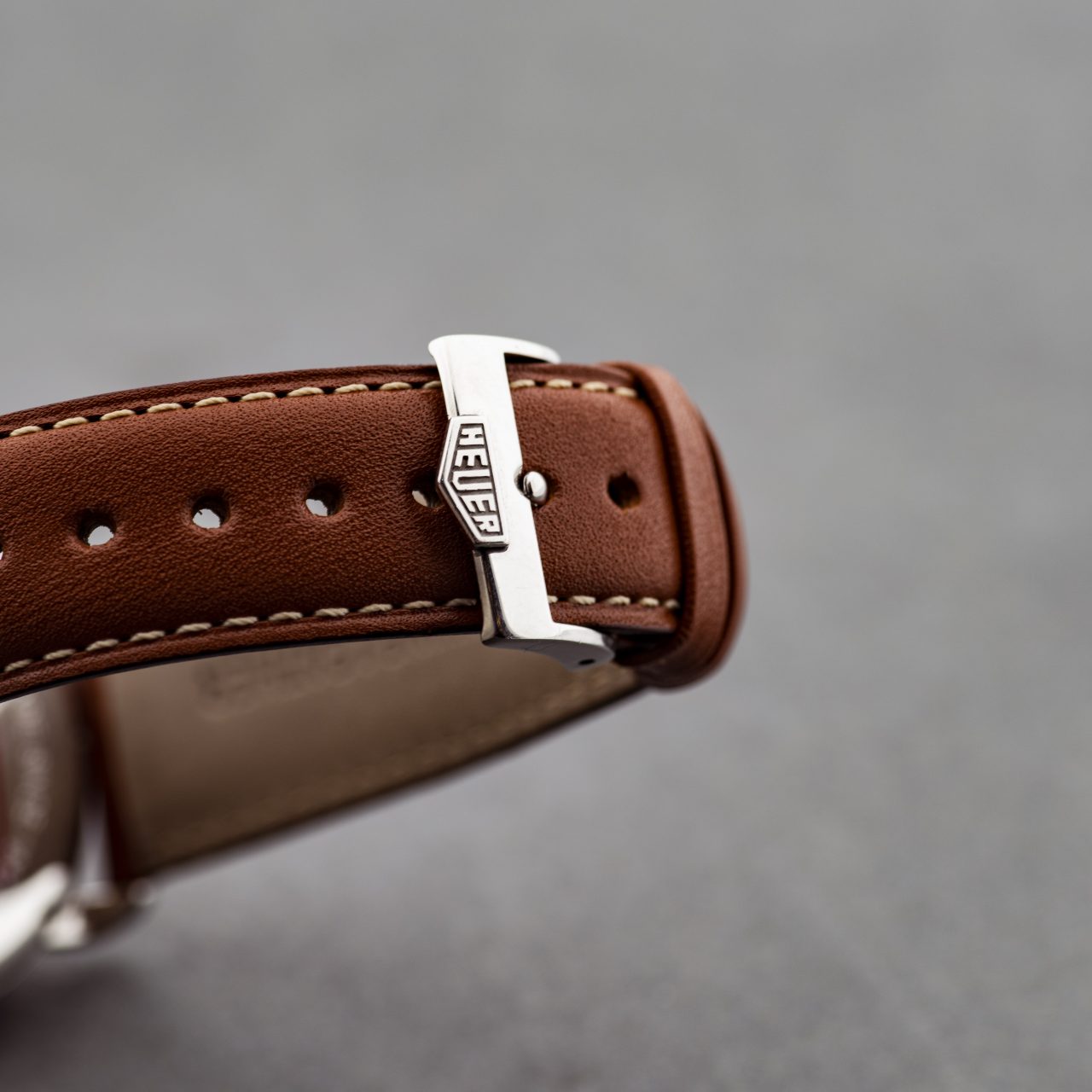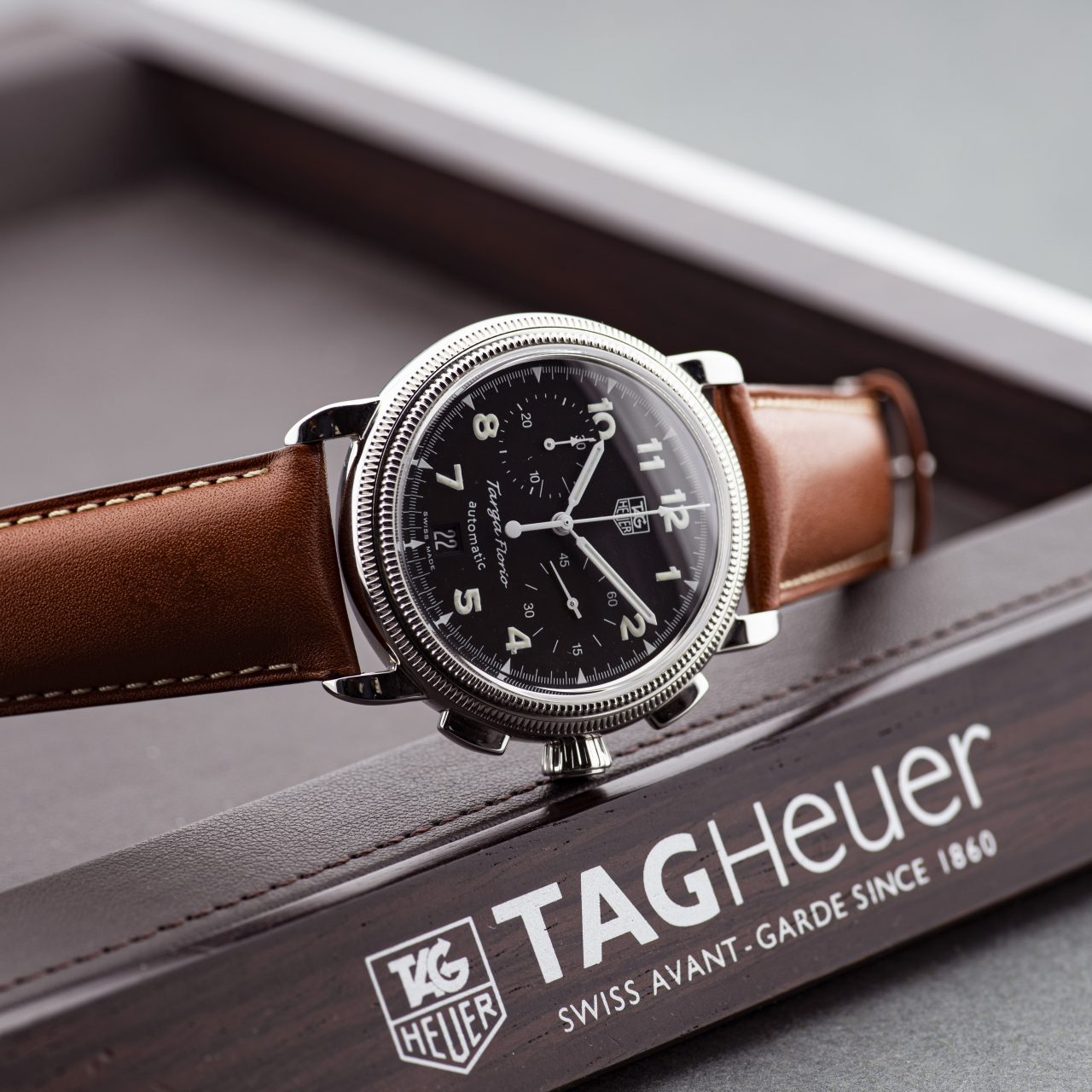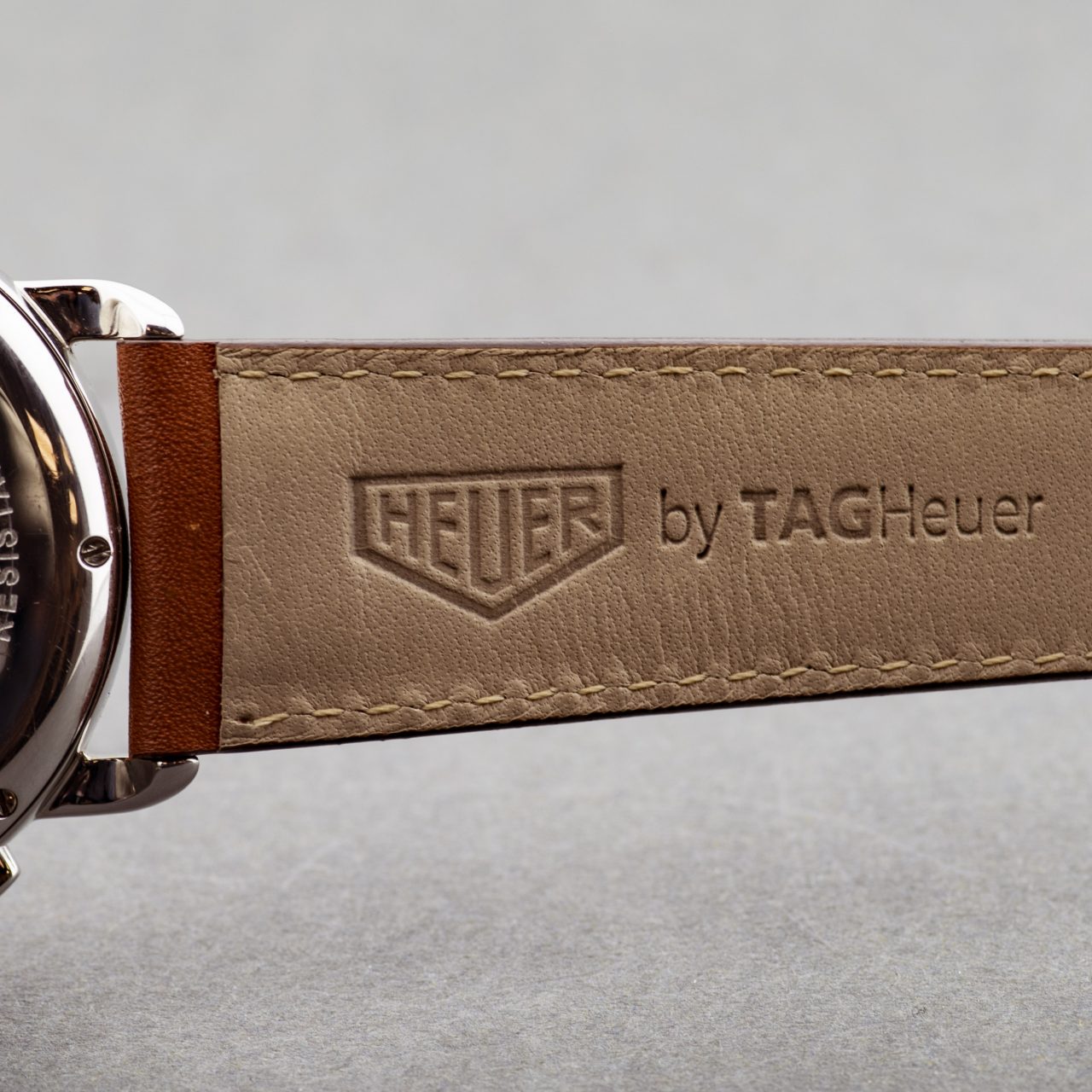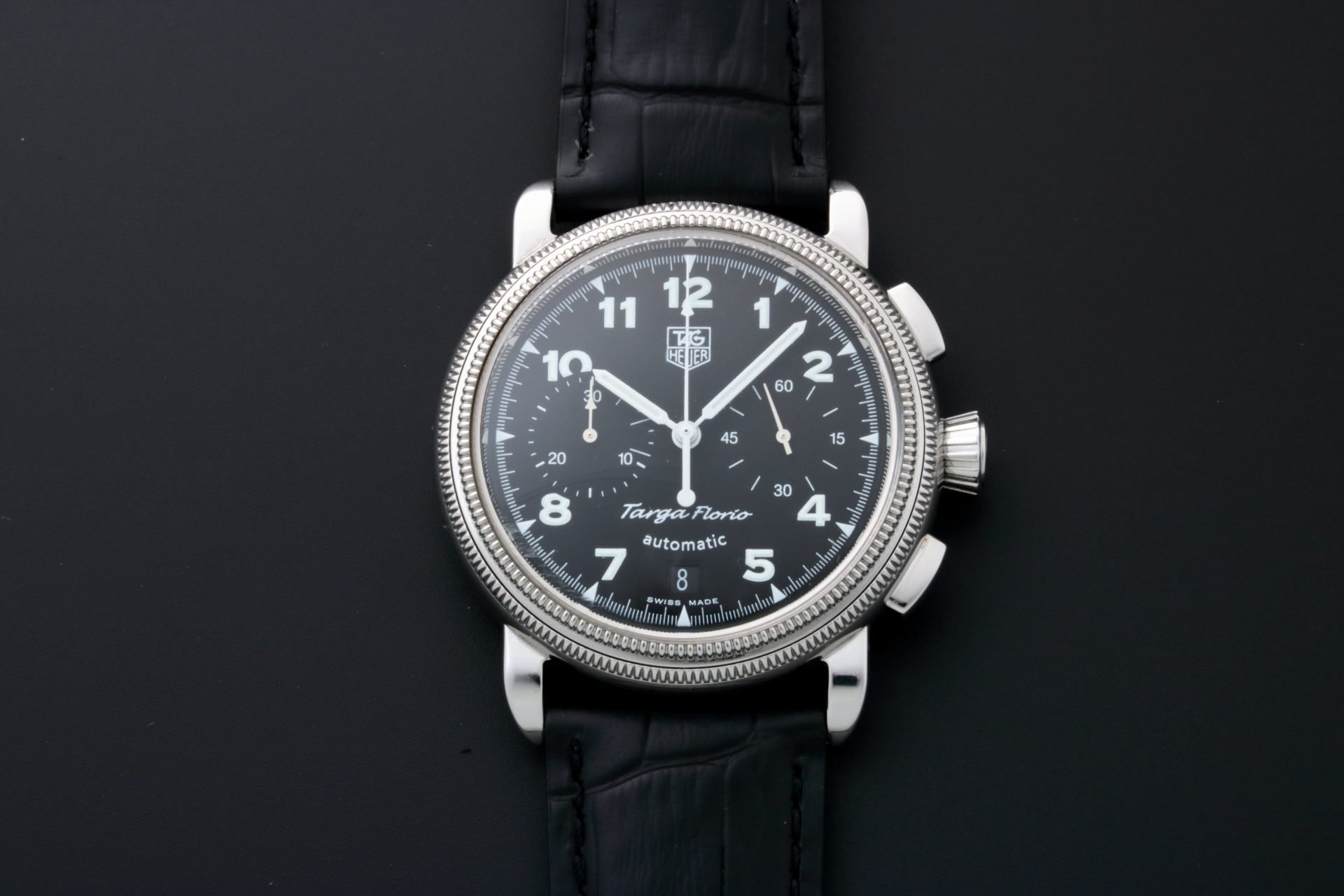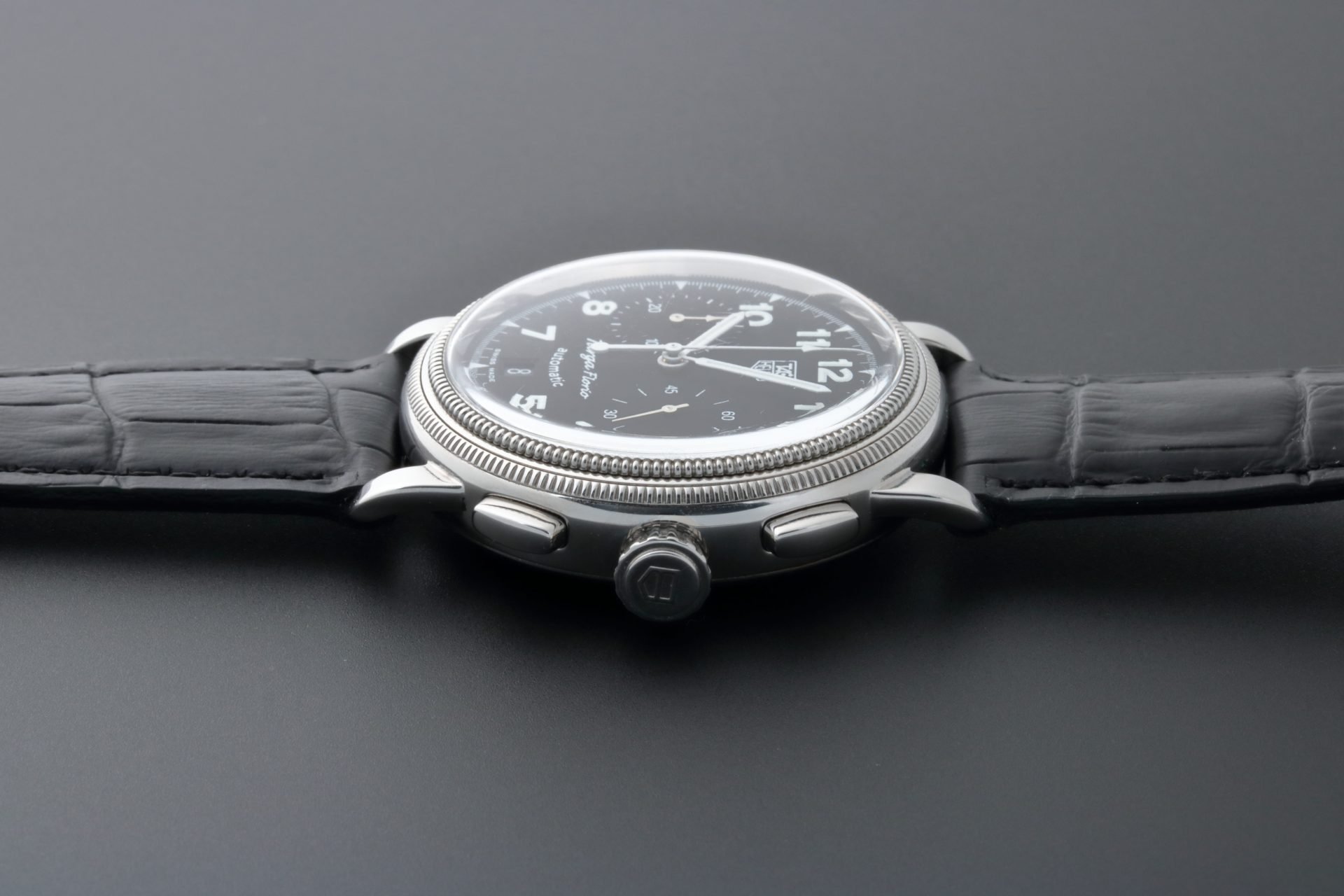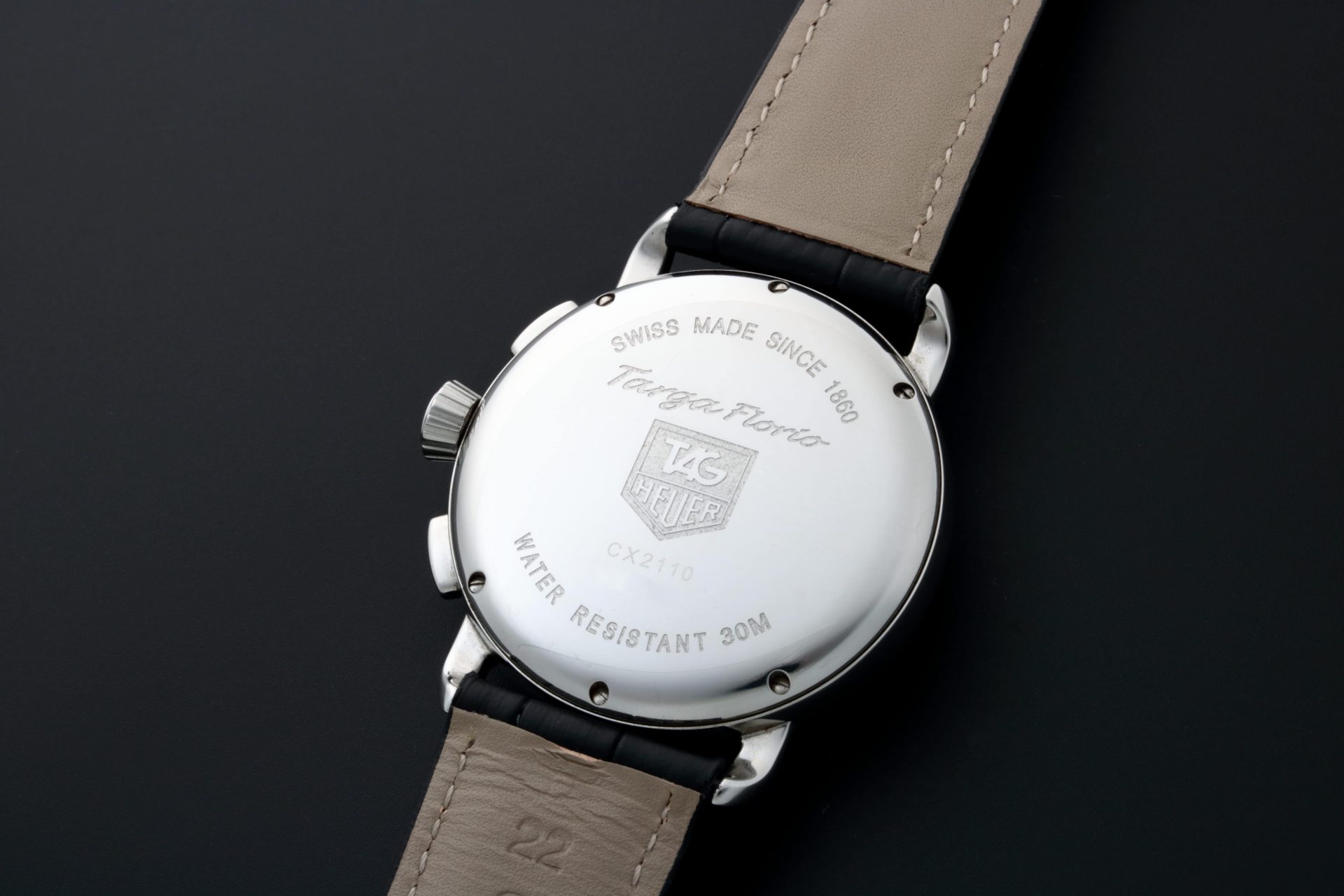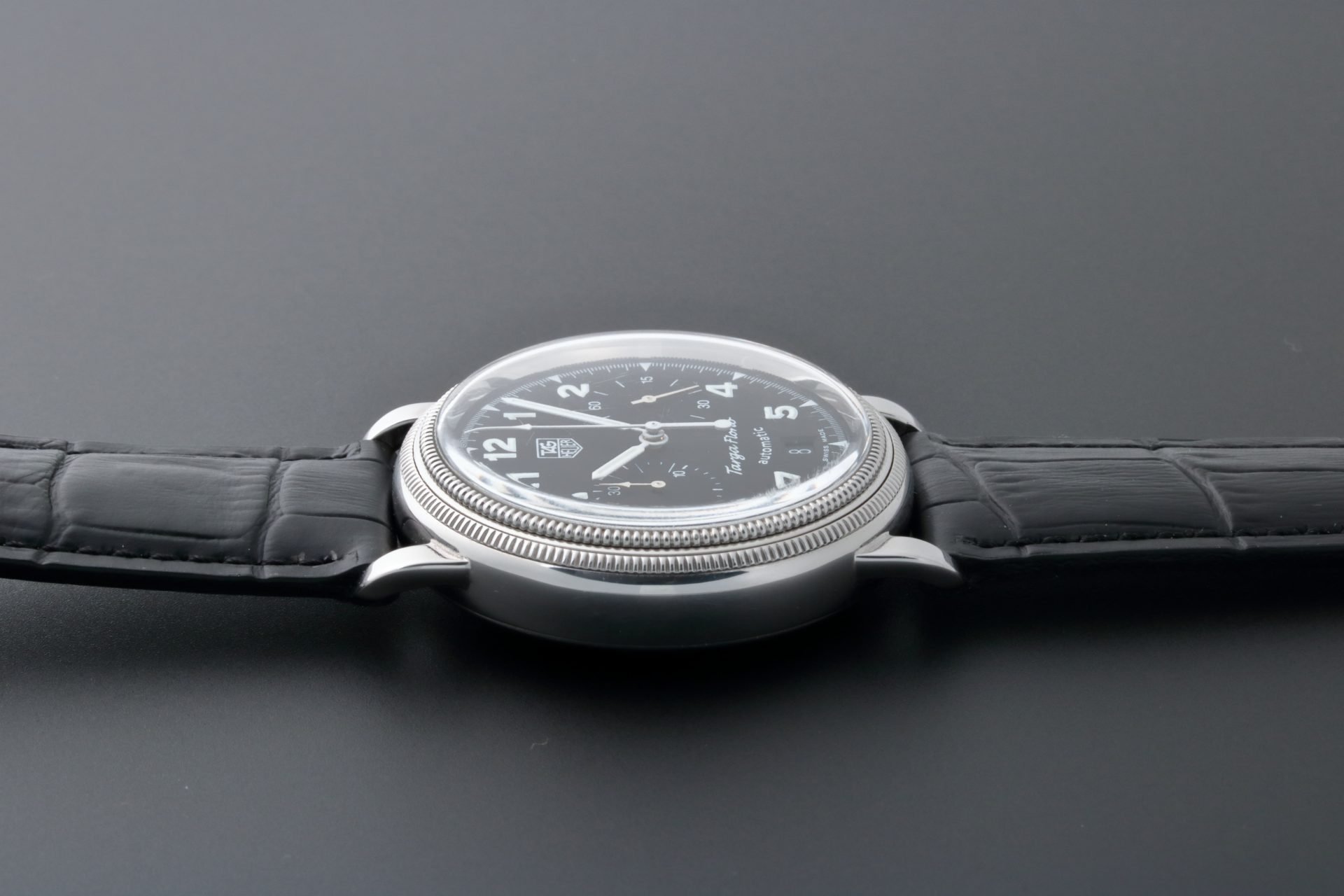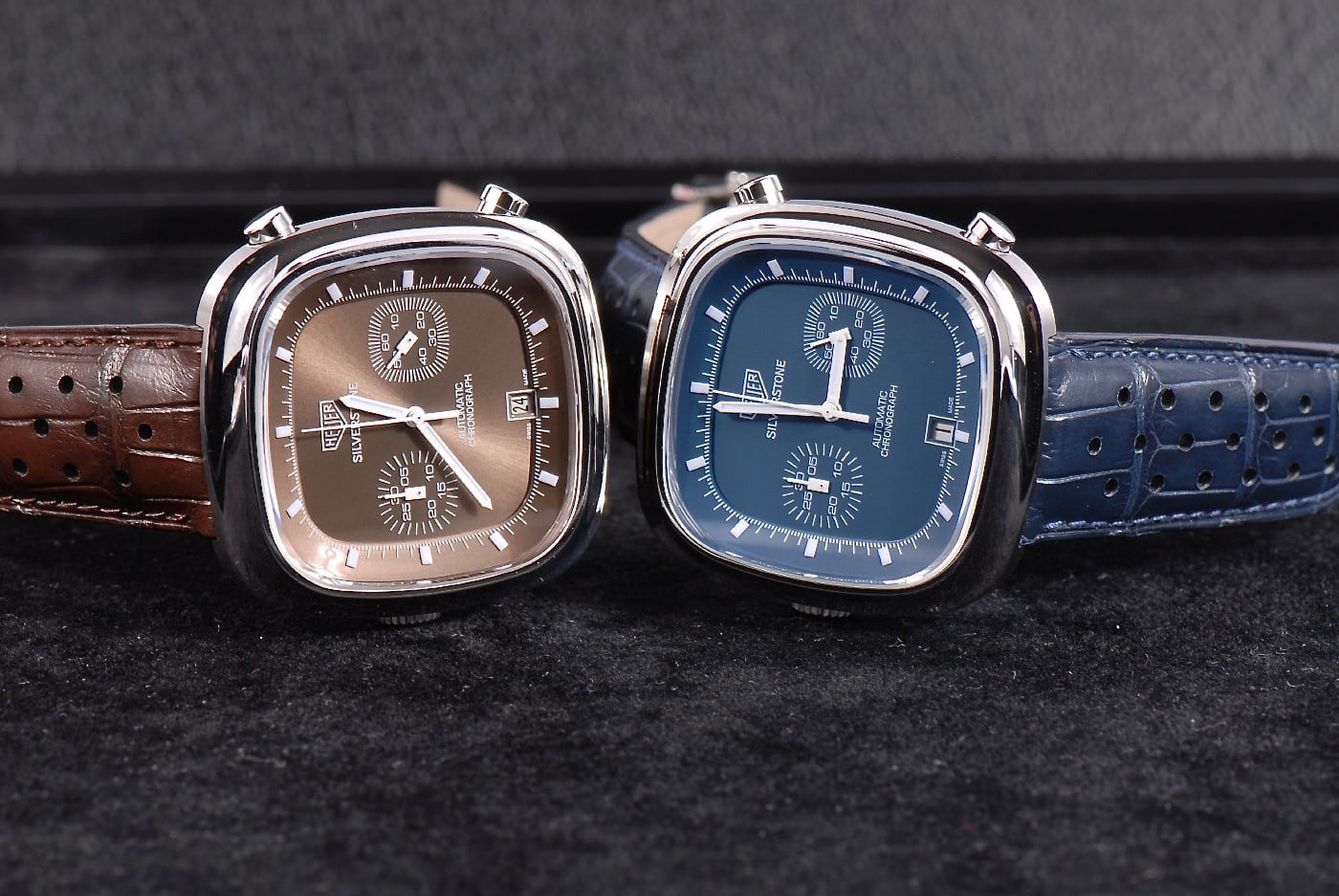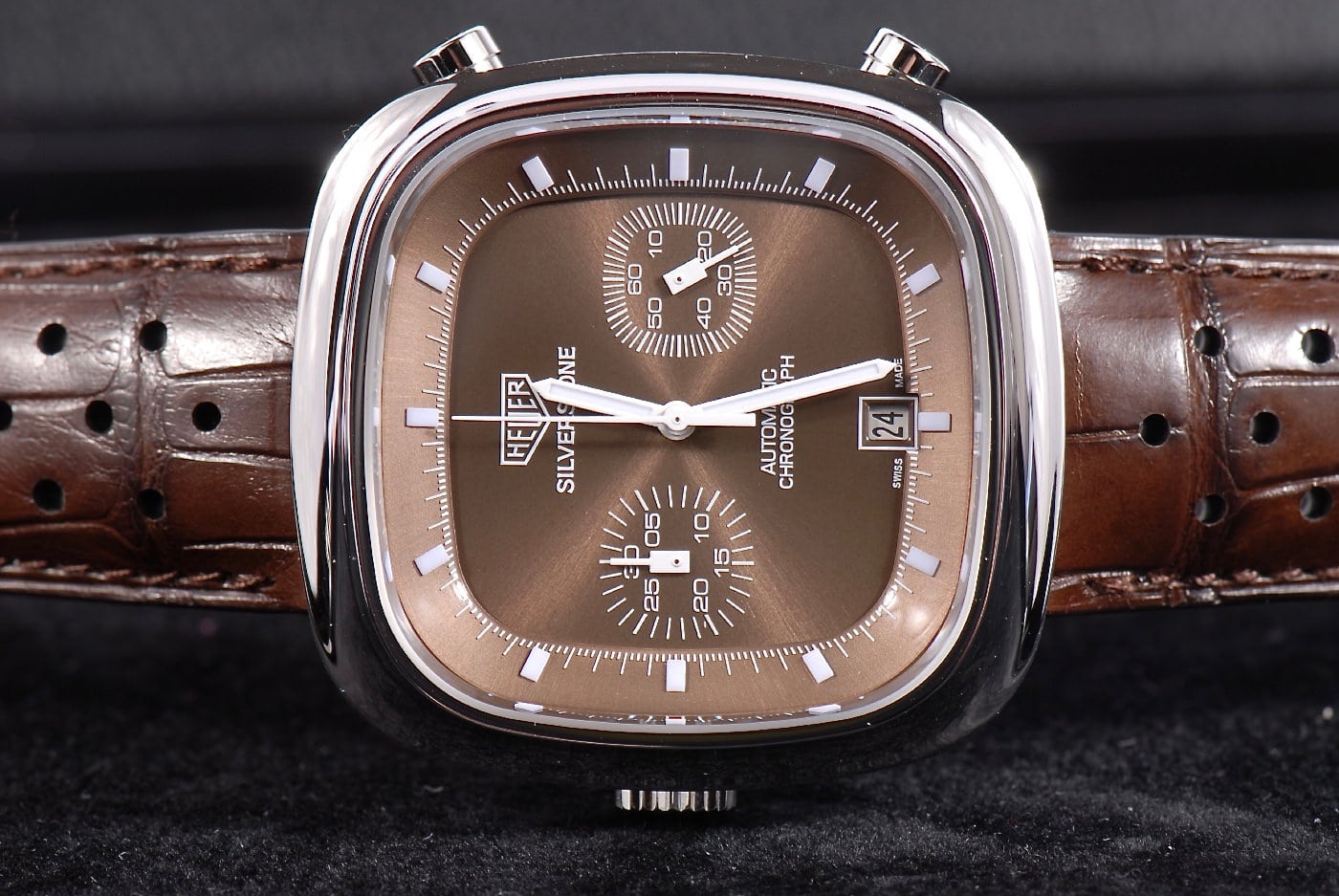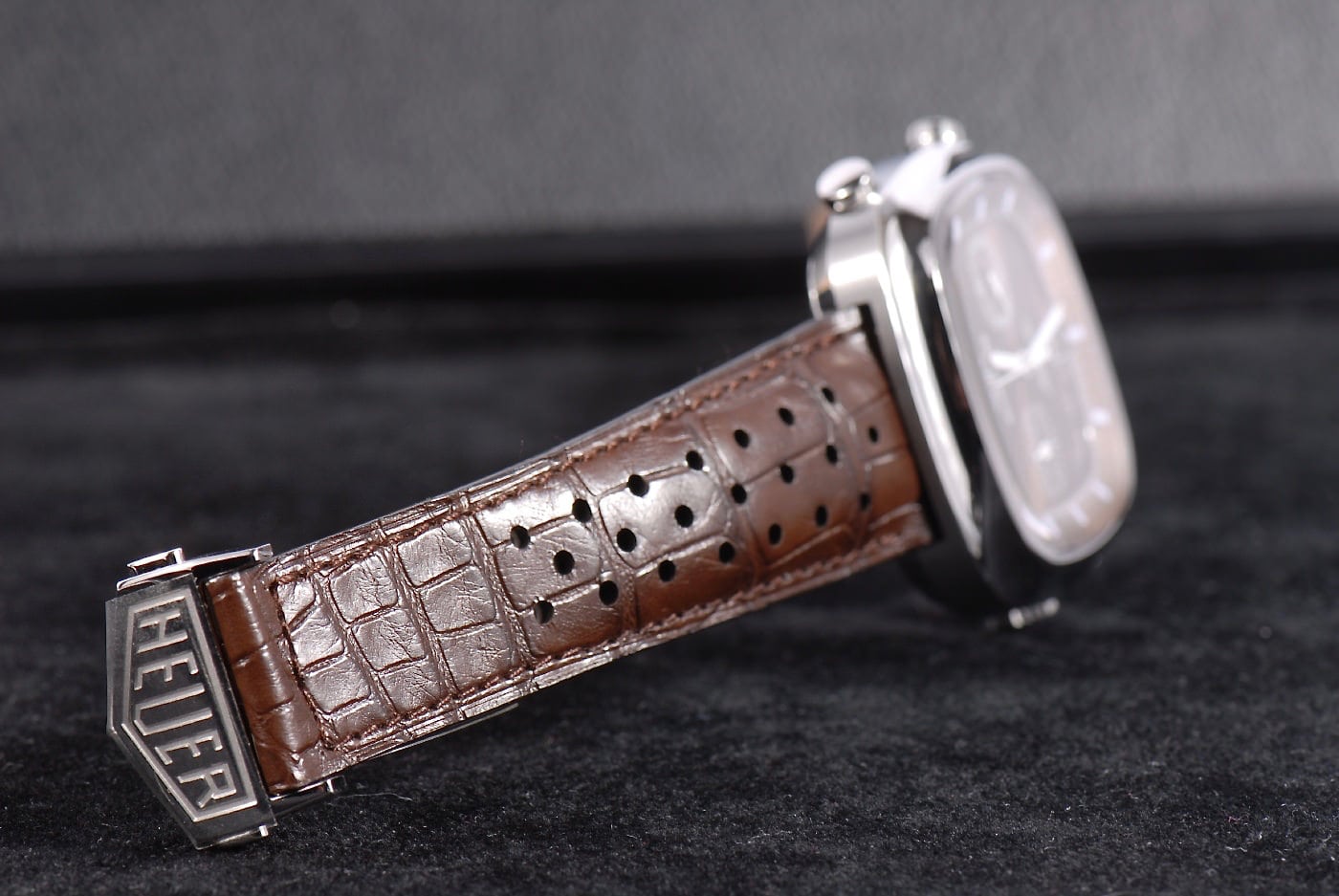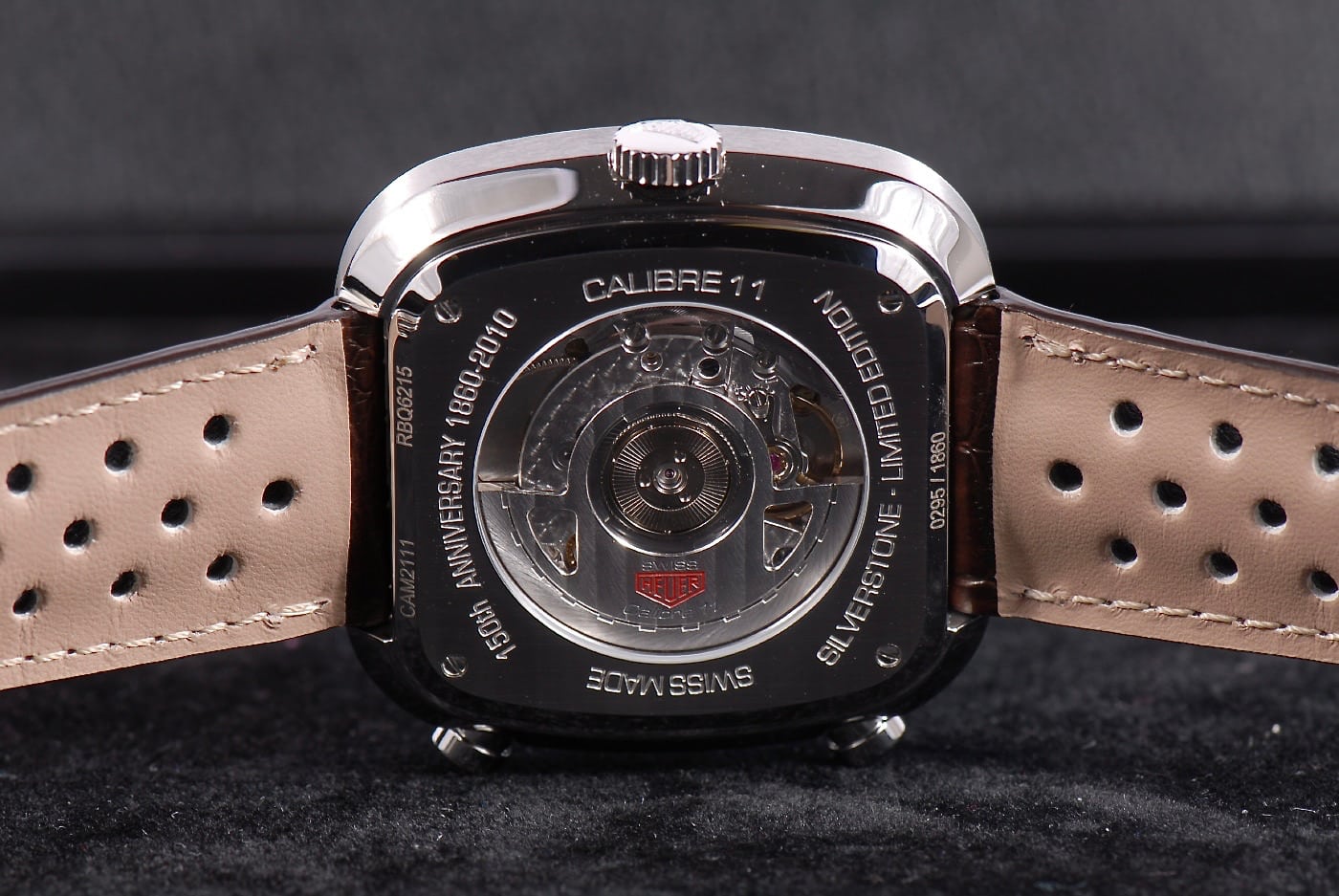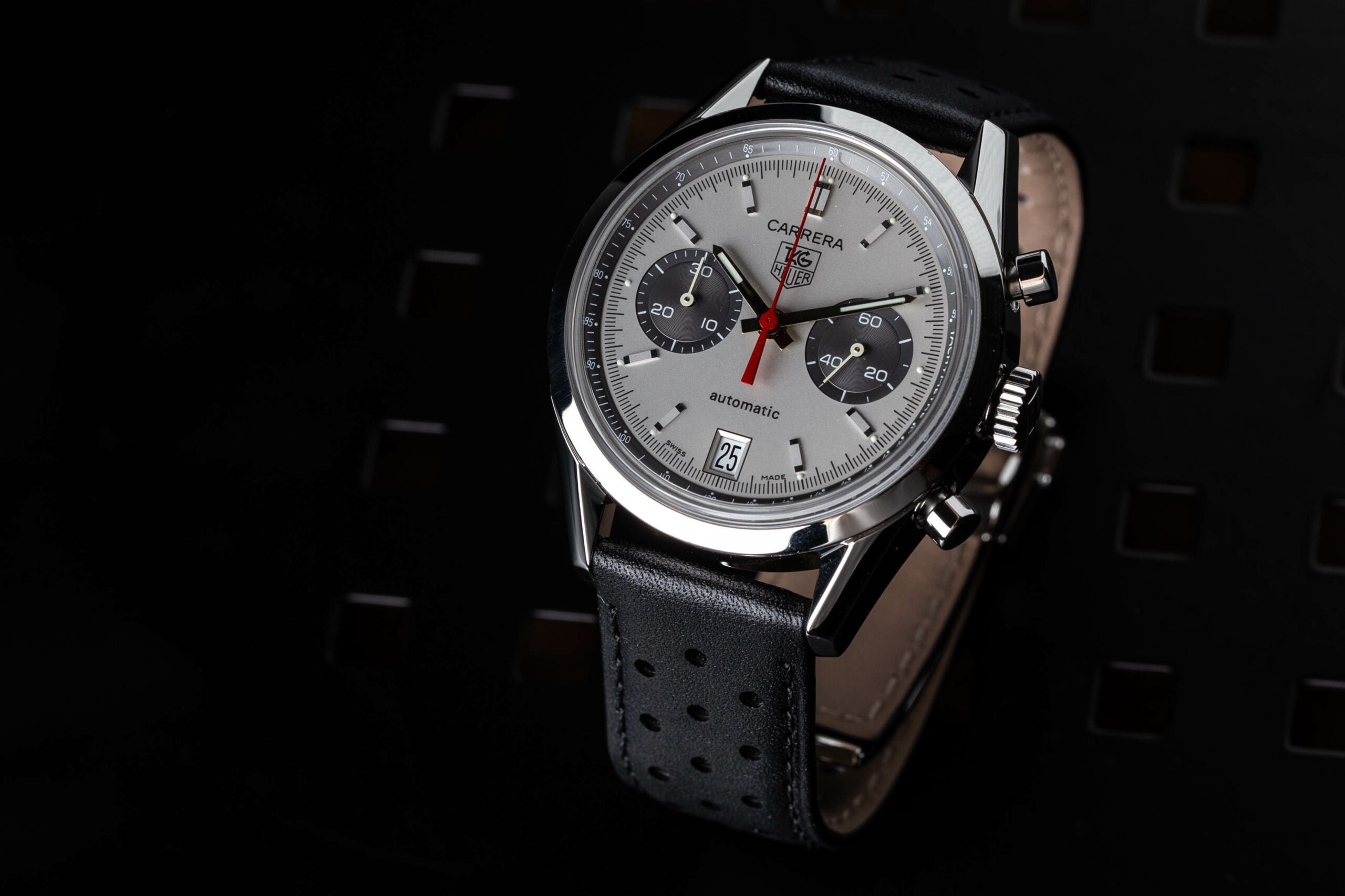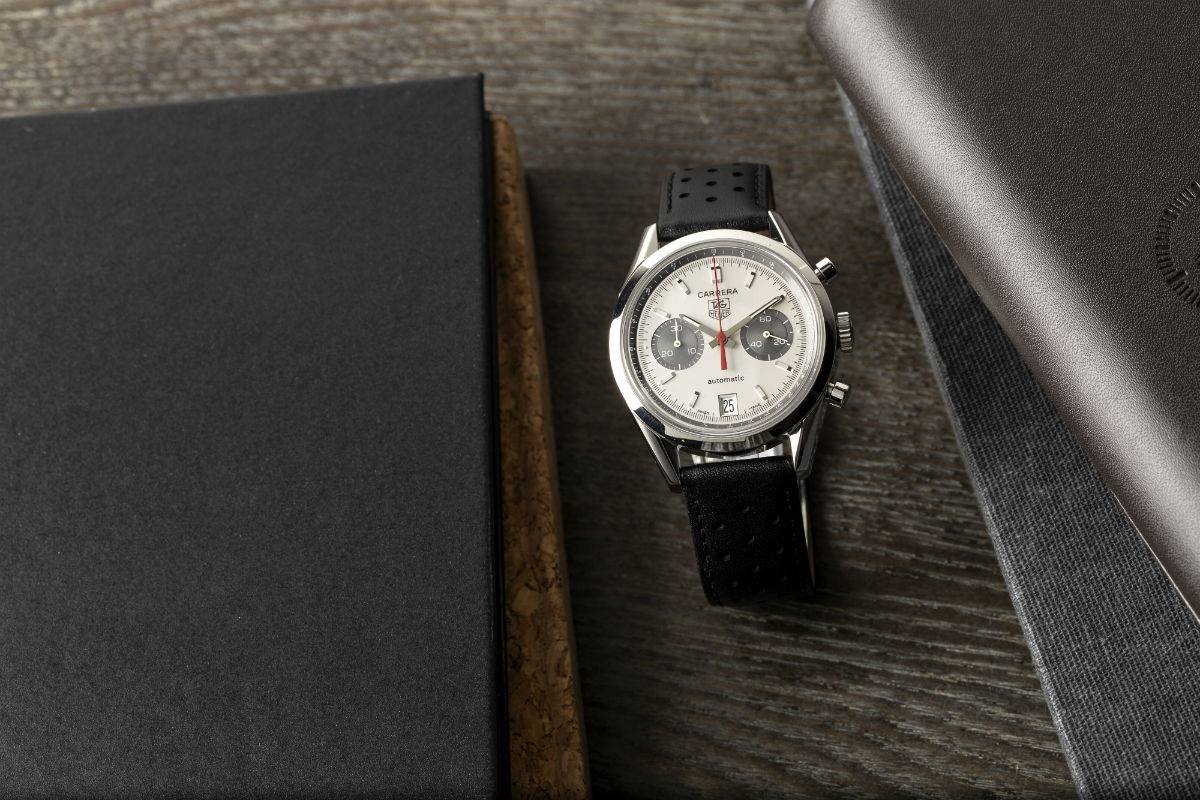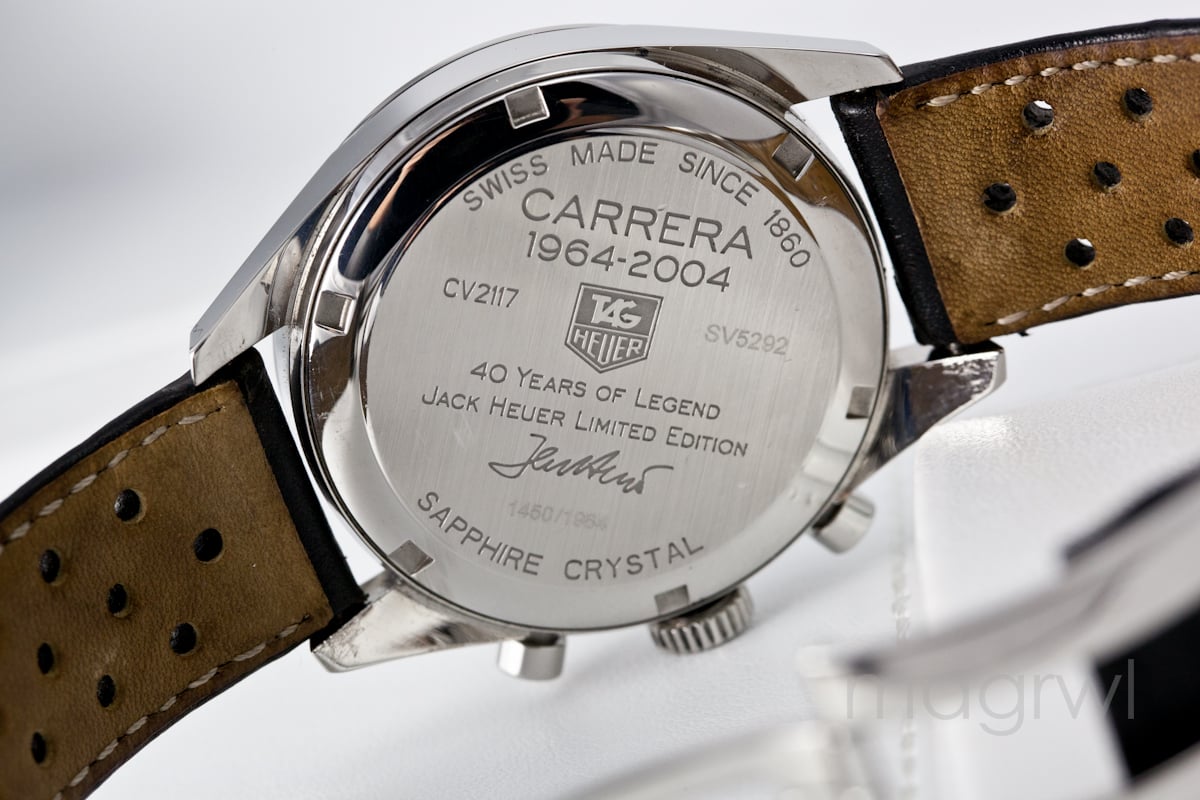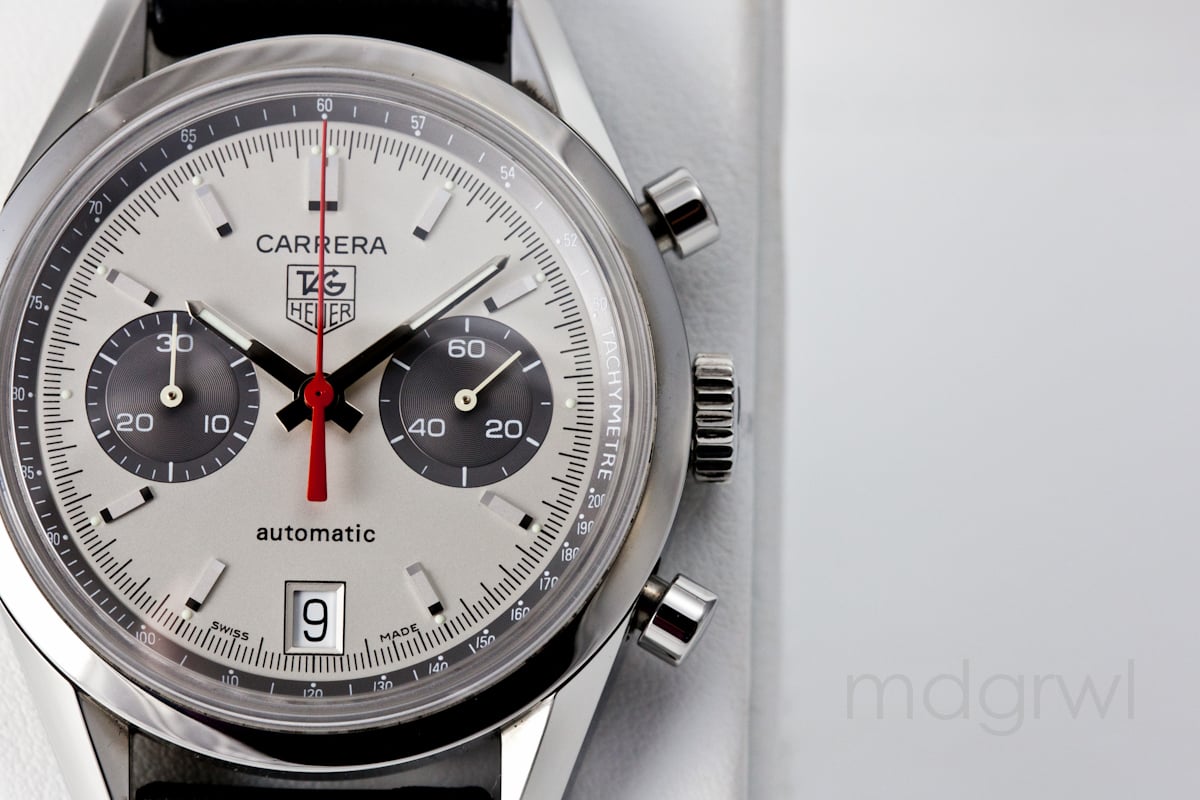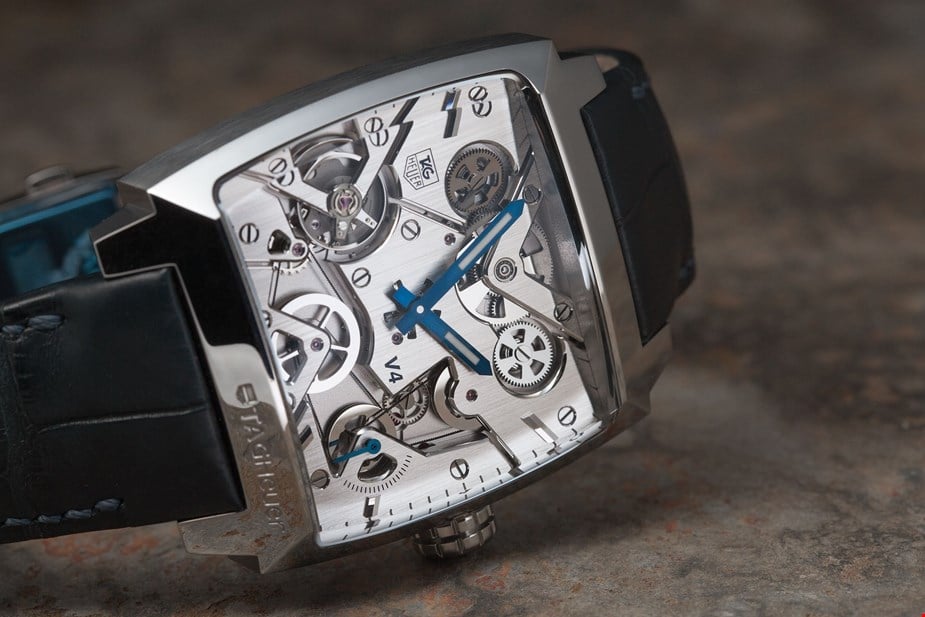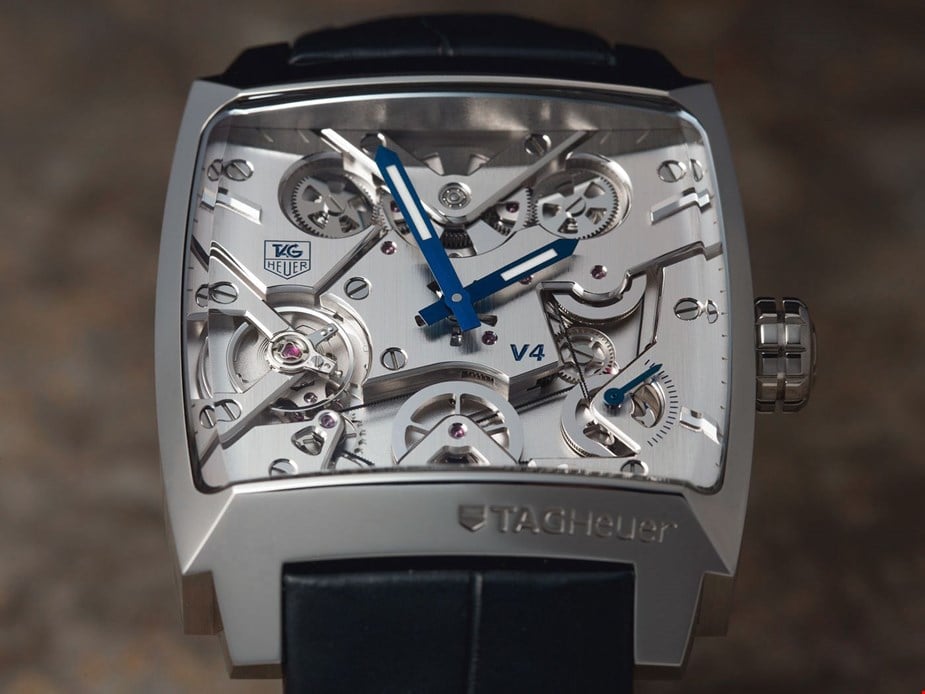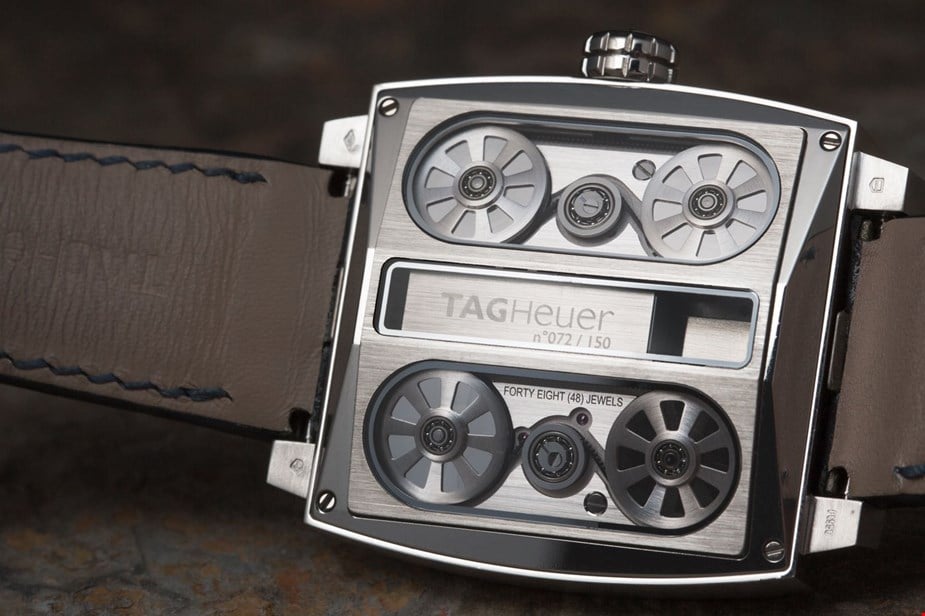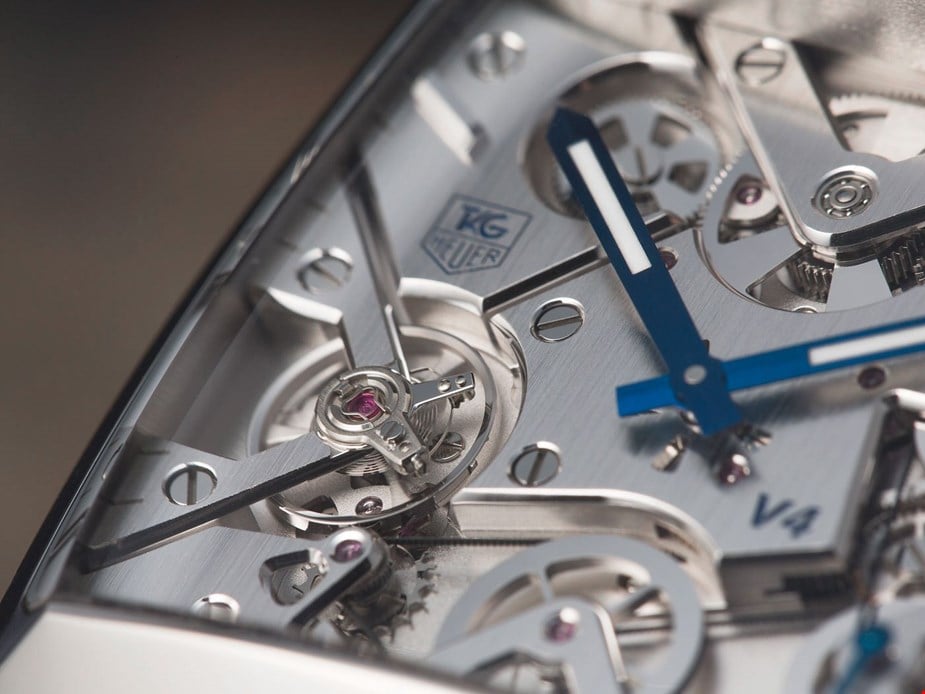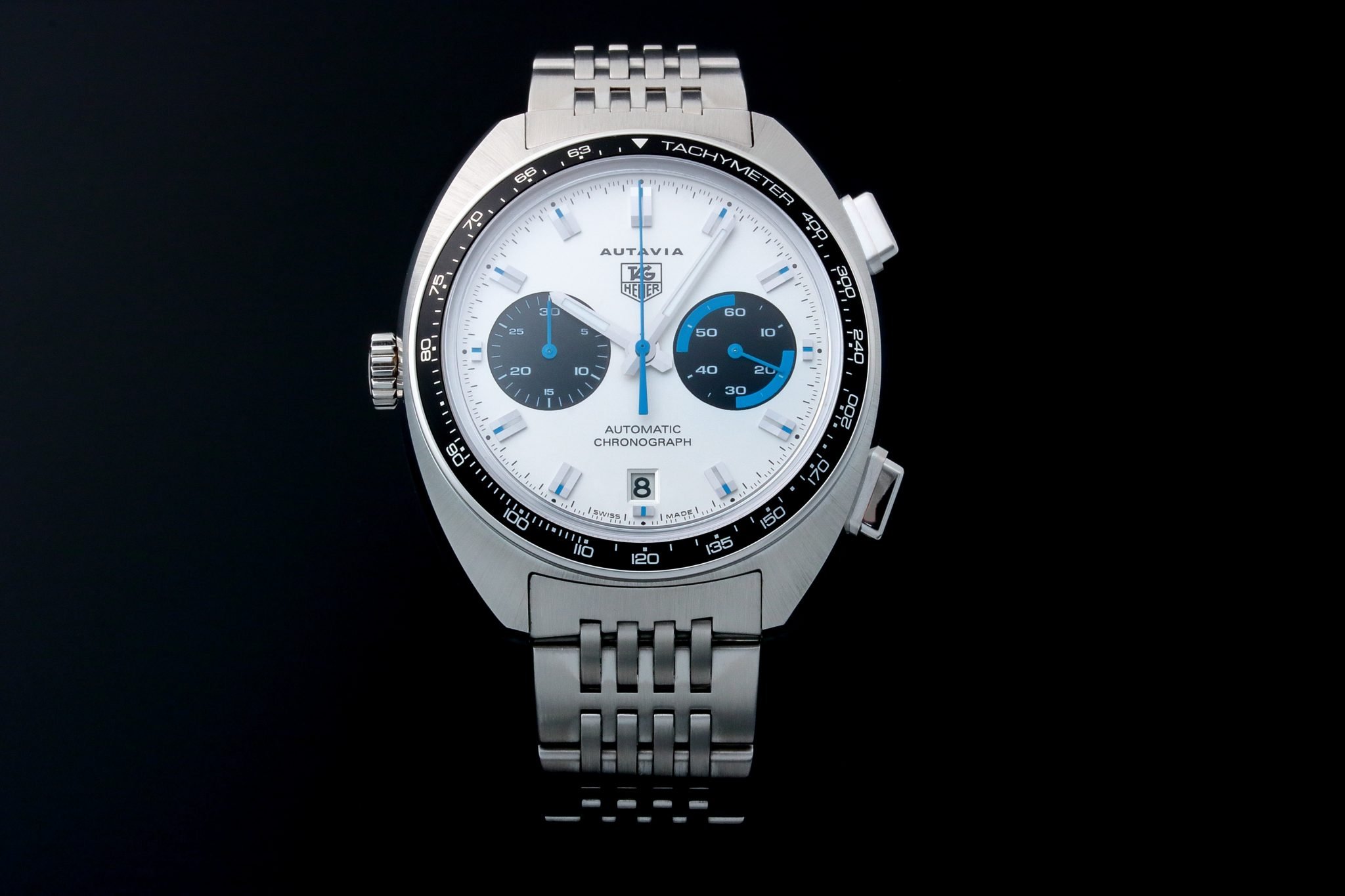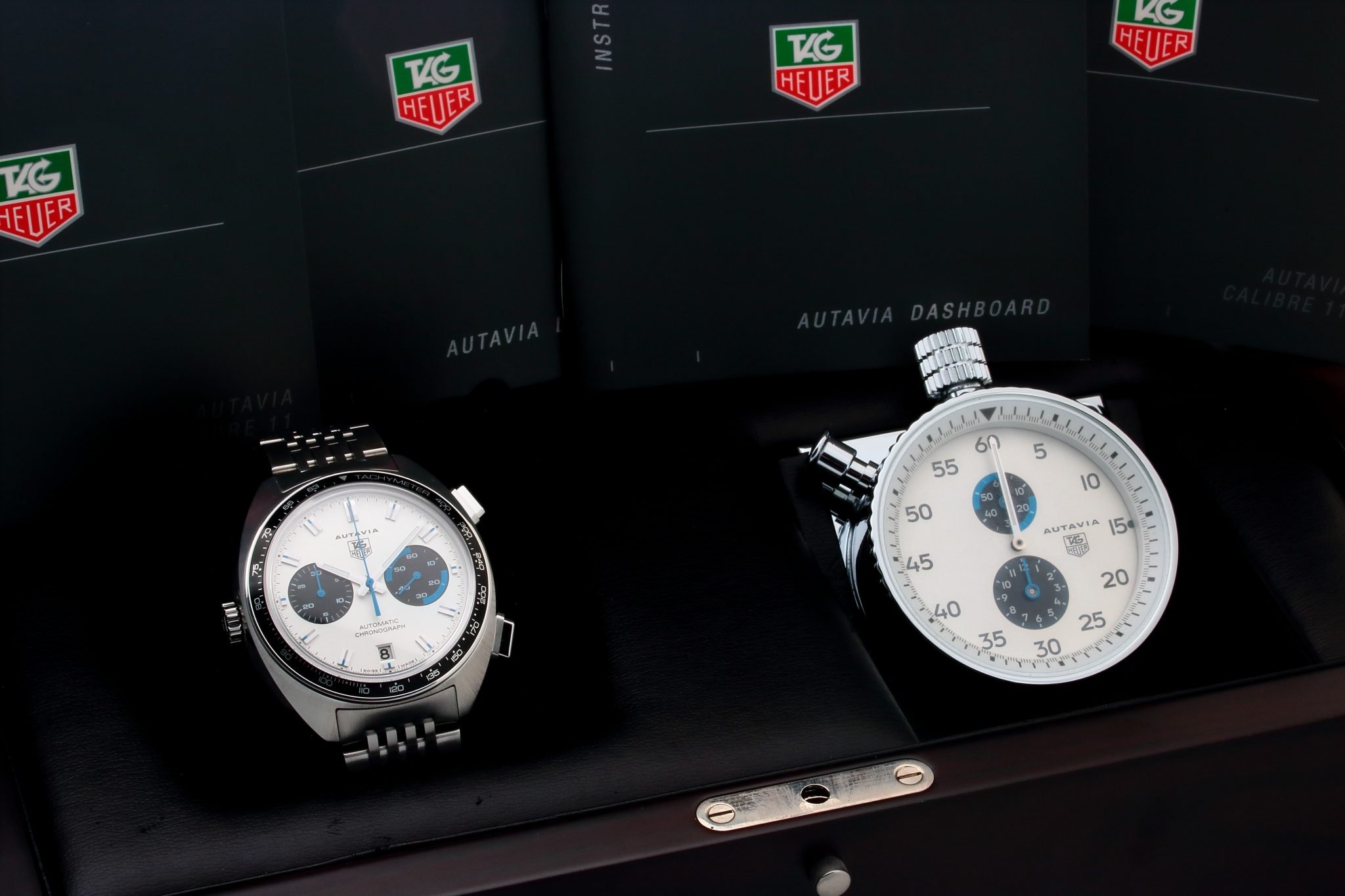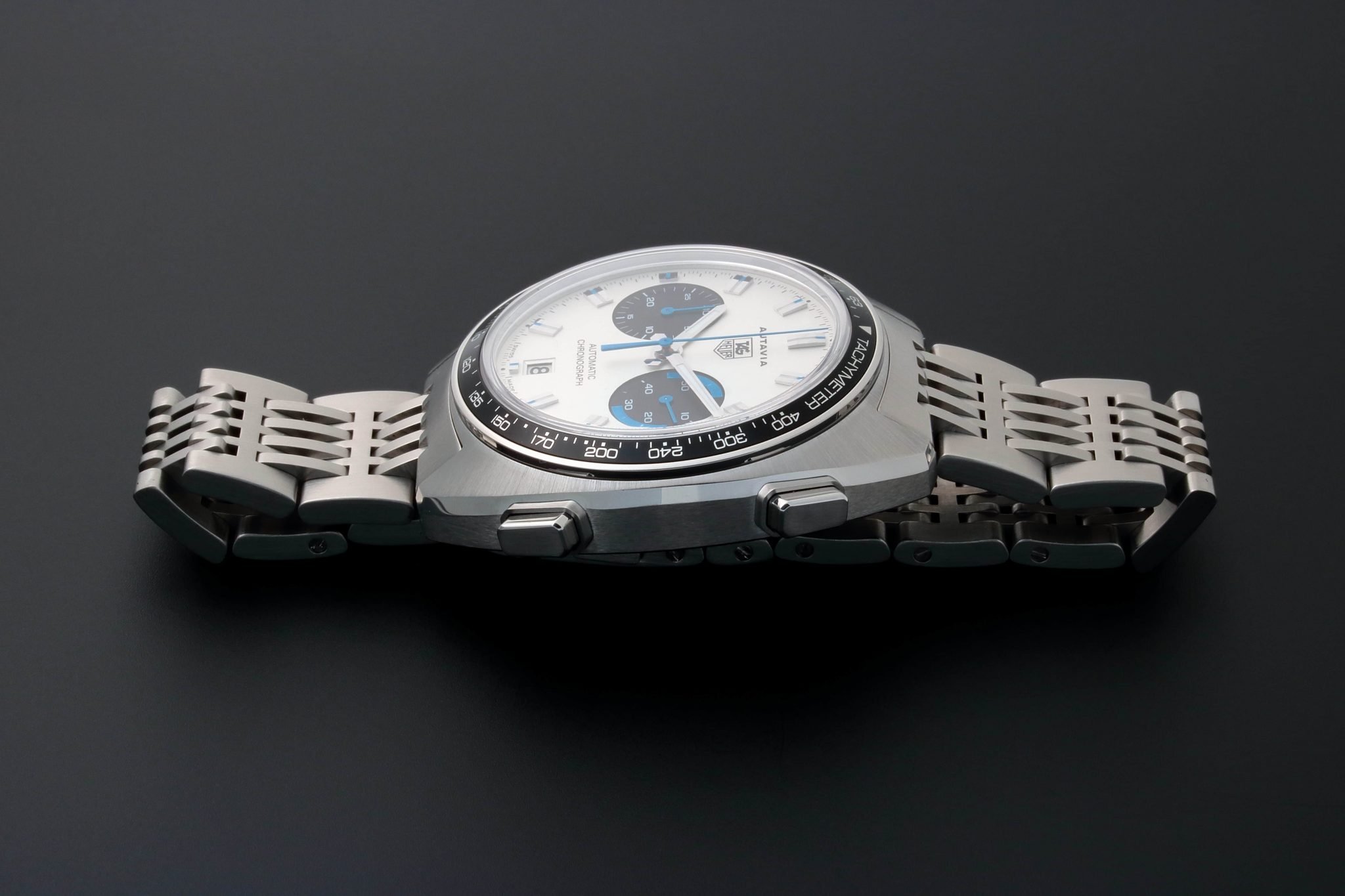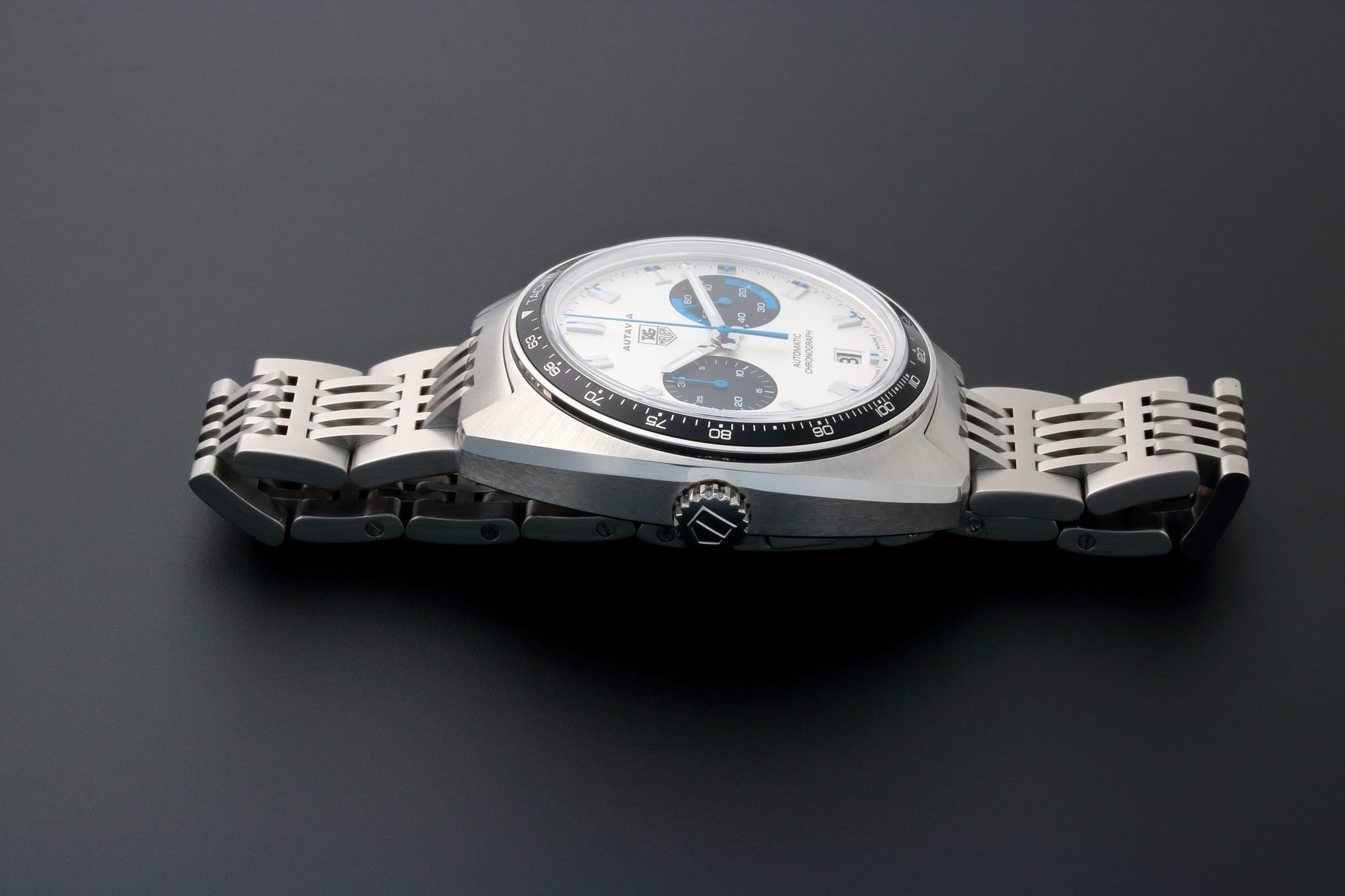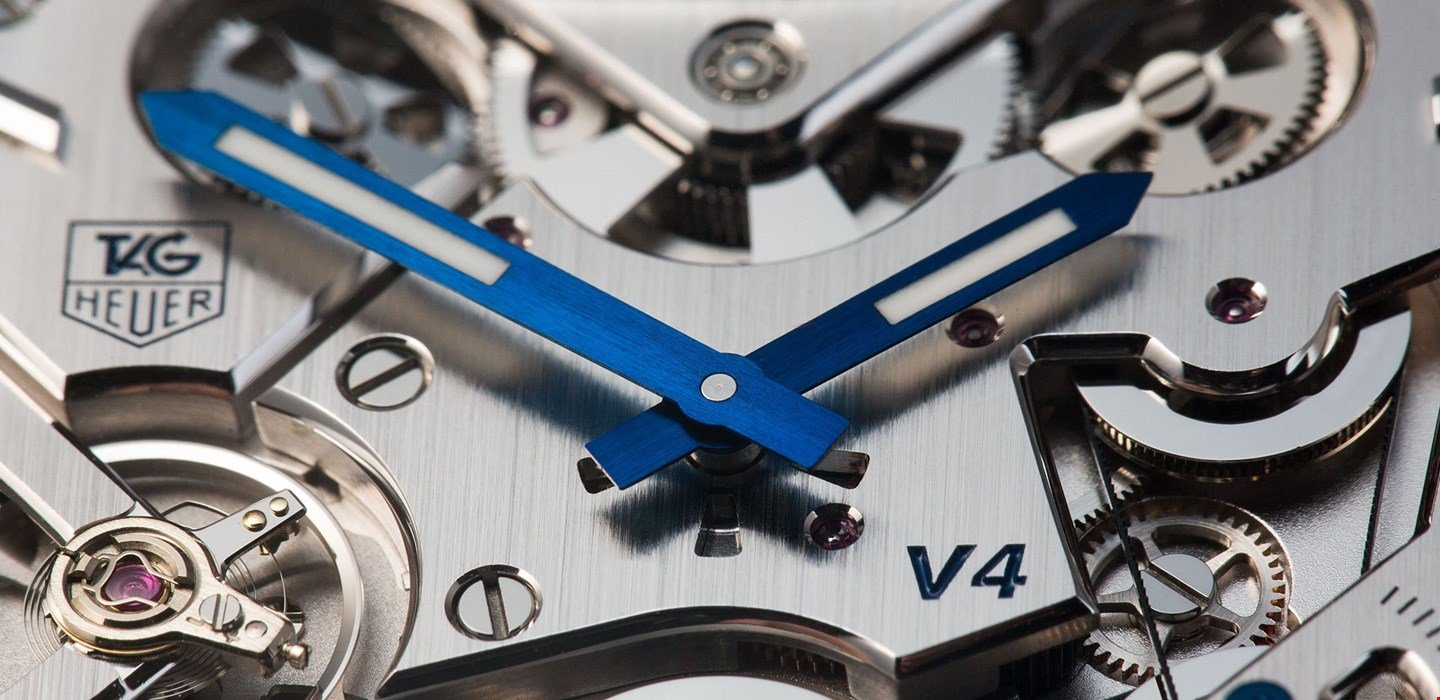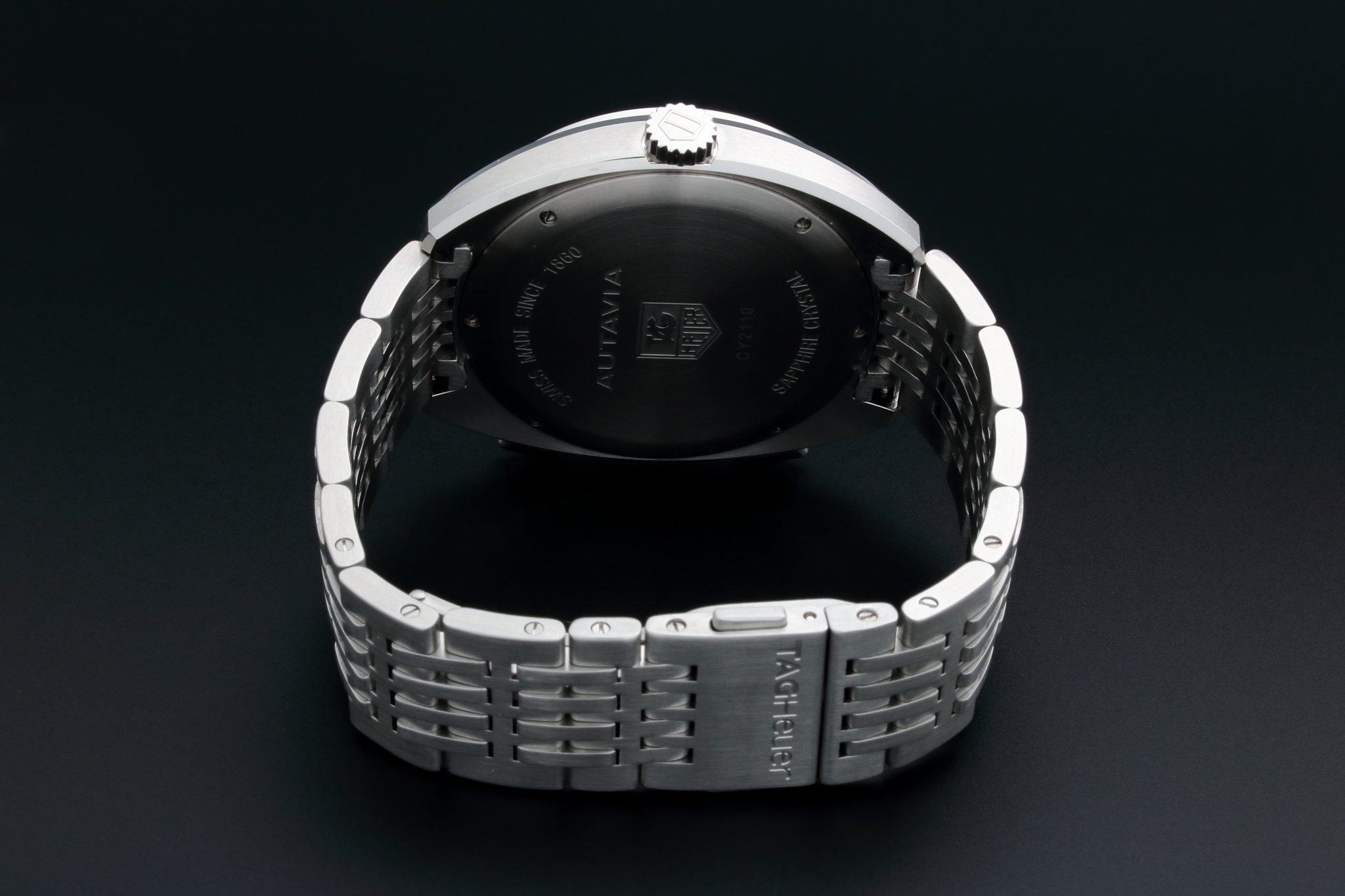Buying Guide: The Best TAG Heuer Watches From The 2000s
We like to talk about vintage watches a lot within the Fratello team. Though most of what we write about is largely focused on the most recent releases and developments, for many of us, a lot of the fun can be found in the sometimes weird and often wonderful world of vintage watches. It’s a world full of history, remarkable watches, incredible stories, and quirky details. It inspired us to come up with a series of articles focusing on the best watches per decade from a select group of brands. Some of them are priceless, some of them are still affordable. In this installment, we will take a look at the best TAG Heuer watches from the 2000s.
By the turn of the millennium, Switzerland had proudly reclaimed its title as the watchmaking capital of the world. The 2000s, in many ways, formed the blueprint for the watch industry as we know it today. By the time the 2000s came around, mechanical watches were incredibly popular. Instead of just selling instruments that told the time, the major brands became cornerstones in the world of luxury goods, and the watch industry was thriving.
We saw brands being bought by conglomerates that turned into the luxury powerhouses they are today. But the 2000s was also the decade that saw the rise of independent brands alongside the industry’s big players. Small brands made it their goal to push the envelope of watchmaking in terms of design and technological developments. In the early 2000s, we also saw watches increase in size like never before. Panerai, Audemars Piguet, Hublot, and IWC enjoyed a great rise in popularity with their oversized watches. They will all be part of the best watches of the 2000s.
TAG Heuer in the 2000s
Just before the turn of the century, TAG Heuer saw a change in ownership. In 1999, French luxury-goods conglomerate LVMH bought TAG Heuer. After Zenith, it was the second big-name watch brand that LVMH acquired. The brand has been part of the group ever since, although it is not considered part of LVMH’s high-end watchmaking operations today. TAG Heuer is positioned as a mid-level brand, whereas Zenith, Hublot, Bvlgari, and Louis Vuitton are the high-end brands. But considering the brand’s rich history and respected name, TAG Heuer could easily be part of the same list of names.
But when it comes to product development, the 2000s showed that the brand was not the same as in the decades before. While the famous Heuer names like the Carrera, Aquaracer, and Formula 1 were still part of the collection, one could debate their greater appeal. When searching for the best TAG Heuer watches from the 2000s, I quickly concluded that the most interesting models from that decade were essentially re-issues of the brand’s biggest classics. While there is absolutely nothing wrong with that, it’s also rather telling to see that these often limited-edition pieces kept the spirit of the brand alive, rather than new timepieces that became shining examples of a great decade for TAG Heuer. Having said that, some of the watches the brand released are stunners. Let’s look at five of the best from TAG Heuer in the 2000s.
The Entry Point — TAG Heuer Targa Florio Chronograph ref. CX2110
The first watch is actually a series of watches. The TAG Heuer Targa Florio was released in 2001 as a tribute to the famous Italian road race of the same name. The race was created by Vincenzo Florio in 1906 and led drivers through the mountains of Southern Italy. Over seven decades, the Targa Florio became famous with race fans worldwide before finally being canceled in 1977 due to safety concerns from prominent drivers at the time.
The inspiration for this piece came from the story of the watch that famous racecar driver Juan Manuel Fangio wore in the 1950s. A nice detail is that Fangio never actually won the race. His best result was second place behind the legendary Stirling Moss in 1955. While you might expect a racing chronograph for timing races, the design for the watch came from Heuer Flieger or Heuer pilot’s watches from the 1930s. The Targa Florio featured a 41mm stainless steel case with the characteristic coin-edge bezel, large Arabic numerals, and oversized crown. The watches were available with either a black or brown leather strap.
Four different references
TAG Heuer released four different Targa Florio references between 2001 and 2005. The first was the regular CX2110, which featured a black dial and the “Targa Florio” name above 6 o’clock. The watch was equipped with a Plexiglass crystal, and the reference number was engraved on the case back. Later models were equipped with a sapphire crystal, and they have the reference number CX2112. The third model was the limited-edition Targa Florio reference 2113, released in 2003. This watch was limited to 1,957 pieces to commemorate Juan Manuel Fangio’s fifth F1 world title in 1957. The dial featured Fangio’s signature underneath the TAG Heuer logo. On top of that, it was equipped with a sapphire crystal, and it had the watch’s unique limited-edition number engraved on the back.
The fourth and last is the Targa Florio Argentina Special CX2111, released as a limited edition of 200 pieces in Argentina, Fangio’s home country. Funnily enough, it didn’t feature Fangio’s signature on the dial like the Limited Edition 1957 had done. The main difference was an engraving on the case back with the reference and the limited-edition numbers. Technically, all four references were the same. They were powered by the brand’s Calibre 17, based on an ETA 2894-2. The automatic modular chronograph movement operates at 28,800vph and has 37 jewels with a power reserve of 42 hours. Finding a regular Targa Florio CX2110 is not that hard. Expect to pay roughly between €2K and €3K, which is a bargain.
My choice — TAG Heuer Silverstone ref. CAM 2111
My pick for this list is the re-issue of the Heuer Silverstone. If you have read the article I wrote about the best Heuer watches of the 1970s, this might not come as a surprise. The original Heuer Silverstone ref. 110.313 F was my pick for that list. I love that watch, and almost fifty years after it was released, it still looks incredibly cool. In 2010, TAG Heuer decided to re-issue the original Silverstone from 1974. The original Silverstone models are some of the most iconic and collectible Heuer Chronomatic models powered by the famous Heuer Calibre 12. The original Silverstone came in blue, fumé (smoke), and red, and TAG Heuer chose to only reintroduce two of the original colors.
The first is the blue version, reference 2110. The second is a brown version, reference 2111, that pays homage to the original fumé Silverstone. The watches were released in a limited-edition run of 1,860 pieces each, commemorating the 150th anniversary of the company. Both watches were delivered on a racing-style crocodile strap in the same color as the dial. And that’s where I think the only miss was with this release. I love seeing the original Silverstone on the bracelet it came with. It makes the watch looks so incredibly nice that I would have loved seeing the re-issue on a bracelet as well.
It’s not a square case
The re-issue has a 42mm × 44mm cushion-shaped case, which is slightly thicker than the original from the 1970s at 14.5mm. This Silverstone also features some great details that really stand out. The first is the contrast between the satin-finished case band and the sloped, concave, polished bezel. The second detail is the beautiful domed sapphire crystal. And finally, there is the spectacular dial design. Although the color and finishing are different from the original fumé dial, it is still superb The brown dial features a metallic finish, the appearance of which changes dramatically depending on your viewing angle. The sloped rehaut contains the luminescent hour markers and has a polished finish that creates a nice bit of contrast with the center of the dial.
TAG Heuer respected the original characteristics of the Silverstone, which featured the crown on the left side of the case. For that, you can thank TAG Heuer’s Calibre 11, which is based on the ETA 2892-2 fitted with a Dubois-Dépraz chronograph module. The movement operates at 28,800vph and has 59 jewels with a 40-hour power reserve. The movement is visible through the sapphire case back, and you will also find the limited-edition number engraved on the back. Overall, this is a great release and a great re-issue of the original watch. Apart from the slightly different dial color and small differences in register design, this is a true reproduction of the original from the 1970s, and that’s why I love it. Expect to see prices from roughly €4.5K up to €6.5K for one of the 2010 Silverstone models.
Money is no object #1 — TAG Heuer Carrera Jack Heuer 40th Anniversary ref. CV2117
One of the most sought-after TAG Heuer re-issues is this special-edition Carrera Jack Heuer 40th Anniversary reference CV2117. The watch was revealed at Baselworld 2005 to commemorate the 40th anniversary of the first Carrera model that was released in 1964. This model was produced in a limited run of 1,964 pieces. TAG Heuer did not turn to the original watch from 1964 for the design, though. The inspiration for this piece actually came from the Carrera 1153S that was released in 1969. The watch features a 39mm stainless steel case, which was slightly bigger than the 36mm of the original watch.
The light gray/silver dial features two dark gray registers and a date window at 6 o’clock. The bright red central chronograph hand contrasts really well with the softer colors of the dial, and I love that. The sloped rehaut features the tachymeter scale and adds a nice touch of extra dark gray color that makes the watch look extra classy. The watch came on a black 20mm racing-style leather strap that completed the look perfectly. This is truly a great-looking re-issue. And that’s something Jack Heuer also thought, as he stated that this watch was his favorite of all the modern TAG Heuer re-issues back in 2008.
Not as expensive as you might think
If you turn the watch around, you will see that the case back features an engraving that states “Carrera 1964 – 2004, 40 years of legend” and has Jack Heuer’s signature on it and the limited-production number underneath. Inside the case, TAG Heuer equipped the watch with the Calibre 17 that powered the Targa Florio, the first watch on the list. As mentioned, the automatic modular chronograph movement is based on the ETA 2894-2. It operates at 28,800vph and has 37 jewels as well as a 42-hour power reserve.
Despite being labeled as one of the most collectible modern re-issues, the prices for these watches have not risen to the levels of the vintage Heuer Carrera timepieces. In all honesty, nothing beats the charm and the stories of the original watches. But I have to say that TAG Heuer hit the nail on the head with this re-issue. It is the perfect combination of a racing chronograph and a stylish watch that you can wear in almost any situation. Expect to see prices between roughly €3.5K and €4K. That is very reasonable for such a nice piece.
Money is no object #2 — TAG Heuer Monaco v4 ref. WAW2170.FC6261
For something that is not as affordable, we will turn to the TAG Heuer Monaco v4. When picking a Monaco for this list, you could go different ways. I could have picked the Monaco ref. CW2113 from the early 2000s that brought back the iconic blue and red colors. Up until that point, the re-introduced Monaco had only come in black. Or I could have picked the 40th-anniversary Monaco ref. CAW211A that introduced the new Calibre 12. But my pick for this list is a very modern version of the Monaco that many of you will probably remember. The platinum TAG Heuer Monaco v4 introduced a completely new aesthetic for the Monaco centered around the incredible technology housed inside the case. The result was a watch that was hard to ignore and impossible to forget.
But let’s start at the beginning. The first Monaco v4 was presented at Baselworld in 2004 as a concept watch. It was the first watch to feature optimized mechanical transmission belts and a linear winding system. This groundbreaking and patented technology was combined with the design of the brand’s biggest icon, the Monaco. As it turned out, the square design of the Monaco was a perfect match for the technical looks of the movement. But as the original concept watch did not function well enough, the technical team at TAG Heuer went back to the drawing board to optimize the technology.
An exceptional movement
The first new Monaco v4 was produced for the Only Watch auction in 2009. A year later, in 2010, TAG Heuer announced a limited run of 150 pieces of the platinum watch available to the watch-buying public. The watch featured a 39mm × 49mm platinum case with a curved sapphire crystal. Through it, one can see the unique Monaco v4 movement in action, with four mainspring barrels mounted on ball bearings, pinions, and a series of belts measuring 0.25 × 0.07 mm. The four barrels are visible if you turn the watch around. That’s also where you will also find the 12-gram linear winding weight. The weight features the limited-edition number and the TAG Heuer name, and it moves up and down on very small ball bearings instead of rotating on a horizontal axis.
The dial side of the watch has two blue hands filled with Super-LumiNova and a small seconds indicator at 4 o’clock. A funny detail is that the design of the small seconds looks more like a power reserve indicator. While we’re on the subject, the automatic, belt-driven movement features a 52-hour power reserve. The movement can be hand-wound, and when it is, the user will see the barrels turn slowly. Overall, this concept still looks as wild and revolutionary as it did back when it was first introduced in 2004. After the original release in 2010, TAG Heuer introduced several limited editions of the Monaco v4. But the platinum original will always be the first publicly available model that features the unique movement. These watches don’t show up for sale often, but when they do, expect to see prices roughly between €45K and €55K.
Money is no object #3 — TAG Heuer Autavia “Jo Siffert” ref. CY2110
The last watch on this list is the modern re-issue of the Heuer Autavia 1163T that racing driver Jo Siffert wore in the early 1970s. I featured the original watch in the best Heuer releases from the 1970s. Nowadays, that watch fetches top dollar on the vintage market. It has become one of the most sought-after vintage Heuer models out there. In 2003, TAG Heuer re-issued two famous Autavia models from the past. The first was the Autavia CY2111 with a black dial, white registers, and orange details. The design was a nod to the original Autavia “Orange Boy” from the early 1970s.
The second was this Autavia CY2110 that came with the iconic white dial with black registers and blue details. This design turned out to be more popular with collectors, as it refers back to the original 1163T. The dial of the re-issue, however, is not crisp white. Rather, it has a metallic or pearlescent feel to it. The watch featured a 43mm stainless steel case that offered a friendly 48mm lug-to-lug and a 20mm lug width. This Autavia also came with a remake of the classic stainless steel G&F “Grains of Rice” bracelet that still looks amazing. Unlike the 1970s original, the bezel of this model did not rotate. On top of that, this was the first time the brand used the TAG Heuer logo on the dial of a classic re-issue.
A modern design update
Overall, TAG Heuer updated the design of the watch slightly to meet modern standards. But the brand did so with grace, as the watch still looks like a very nice re-edition of the original watch. Alongside a regular release, TAG Heuer also produced a limited number of 70 box sets that featured the watch and a dashboard timer. Inside the case, TAG Heuer equipped the watch with its new Calibre 11, based on the ETA 2892 movement with an added Dubois-Dépraz chronograph module. It’s the same movement used for the 2010 Silverstone and thus features the crown on the left side like the original watch.
Somehow, this watch was never a commercial success. While it was met with praise from collectors and the press alike, it never sold in huge numbers. Almost two decades later, quite a few collectors still praise this as one of the best modern re-issues that TAG Heuer released. It is a perfect affordable option compared to the vintage original. A quick check of the prices for the Autavia 1163T indicates that they go for roughly €10K to €15K. Compared to the roughly €3K to €4K that this re-edition goes for, that’s a lot of money indeed. This could be the perfect option for someone looking for vintage design traits combined with a modern movement.
Final Thoughts
As always, I can only cover a few of the great number of classics that TAG Heuer produced. There is an incredible world of different models and references to discover when it comes to TAG Heuer. While some of the more modern watches in the collection in the 2000s do not have the appeal of some of the classics, the brand still produced some amazing watches. For me, the attraction of the brand in the 2000s was the different re-issues. So I would suggest you start by exploring the watches from that time, as they can often be bought for a fraction of the prices of the original watches. As with all the other brands, it is important to do your homework. The world of vintage TAG Heuer also watches suffers from fake or Franken pieces. That’s why it is good to do some required reading.
Much crucial historical info has been well documented by passionate Heuer collectors and is available to read online. I want to mention a couple of websites — Jeff Stein’s On The Dash, Vintage Heuer, Calibre 11 (home of many vintage Heuer collectors), and the Heuer Price Guide. All of them contain tons of valuable information. On top of that, contacting vintage experts will help you out greatly. It’s a great way to learn more about a watch and get to know some amazing people along the way.
Next week, we will look at some of the best watches from Panerai from the 2000s. In the meantime, make sure to let us know what your favorite TAG Heuer watches from the 2000s are in the comment section below!

